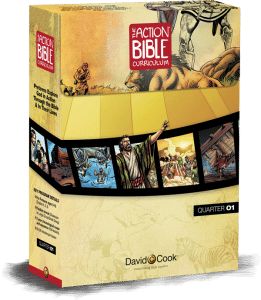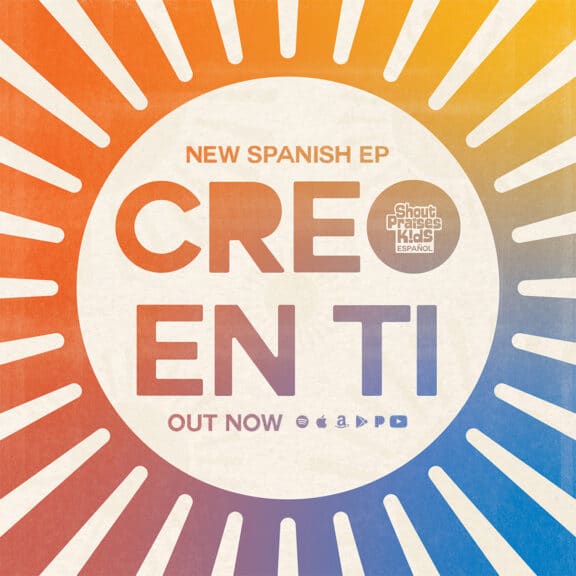Use this lesson to teach students about how God is strength.
LESSON OVERVIEW
Despite Samson often displeasing the Lord, God gave strength to Samson to fight the Philistines and lead Israel as a judge for 20 years. The Spirit of the Lord was on Samson giving strength. The same Spirit of the Lord was on Jesus when He was ministering on earth.

JOIN IN
Set the stage for the lesson by making preteens feel comfortable and building relationships at the same time.
Materials:
- 3-4 prepared eggshell halves
- Several books differing in weight
- Optional: media clip of egg experiment
- Optional: media device
The Great Egg Challenge
Before the lesson, prepare egg “domes” or half shells to use with this activity and then tap the end of an egg gently on a hard surface to break it. You don’t want to crack more than the end. Empty the contents of the egg, saving them to use at home.
Draw a continuous line around the middle of the egg (not end to end) and carefully score the line with scissors or a sharp knife. Using scissors, cut along the line to create a flat edge. Rinse the shells and let them dry.
In class, begin today’s lesson by inviting preteens to tell you how fragile eggs are. Set it up with something like this:
- What happens if you drop a raw egg on the floor?
After getting students’ responses, continue with something like this: We think that eggs are really fragile, but let’s check out how strong they really are.
Set the eggshells in a rectangle shape on the table (or a triangle if you are only using three shells). Ask preteens how many books you can put on top of the eggshells before they break.
Gradually add books one at a time in a pile (they may hold more weight than preteens think). After the eggshells break, set aside the books, throw away the broken shells, and talk about the following questions.
As an option, before class, search online using the words “eggs, bricks, experiment, strong” to find an age-appropriate video of a similar experiment. Scroll through the video so that you start at the beginning of the experiment. After the video, continue with the questions.
Talk About It
- Why do you think the eggs could hold so much weight? (The dome shape of the egg shells helps spread the weight, evenly transferring the weight to the table. It’s the same principle used in making bridges with arches.)
- What are a few other strong things you can think of?
- What makes something strong?
Let’s see what the Bible says about a man with strength and how he shows us that God is Strength.
EXPLORE
Pray
Begin EXPLORE with a short prayer. You may want to have students hold their hands out, with their palms up, in a posture of being open to the Holy Spirit. Pray something like this: Dear God, teach us by the Holy Spirit today as we discover what Your Word says about Your strength. Amen.
Into the Bible
Numbers 6:1-8; Joshua 24:25-29; Judges 14:6, 19; 15—16; Luke 4:18-21; Hebrews 11:32-34
Materials:
- Bibles (1 per student)
Let’s discover what the Bible has to say about how a judge ruled Israel and what it shows us about God is Strength.
Begin today’s Bible study by reading aloud the introductory paragraph: Joshua and the people of Israel had followed God faithfully for years, conquered the land, and lived in the promised land. Before he died, Joshua made a covenant for the people to follow God, His decrees, and His laws.
Instead of following the covenant they had just made with God, the people did evil. They forgot about God and worshiped false gods. This made God angry. He let enemies defeat and overtake Israel.
When the people did remember God and turn back to Him, God would send a judge to overcome their enemies. The people would follow God and then fall back into the sinful cycle. This happened several times.
Ask a volunteer to read Judges 13:1-5.
1. What did the angel of the Lord tell the woman? (She would have a son. He was not to cut his hair because he would begin to save Israel from the Philistines.)
You may want to mention that the Philistines were a people who had moved into southwestern Canaan. They would present a constant challenge to the people of Israel until the reign of David.
Continue with something like this: The son was Samson. He took a special vow to God as a Nazirite.
Ask students to silently read Numbers 6:1-8.

2. What was special about a Nazirite? (A Nazirite was separated to the Lord [set apart to the Lord]; was not allowed to eat or drink anything that came from a grapevine such as wine, grapes, raisins, etc.; a Nazirite could never cut his or her hair; and a Nazirite could never go near a dead body.)
Tell a summary of Samson like this: When Samson grew up, he went to a town called Timnah [TIM-nah]. He saw a Philistine woman and wanted to marry her, even though God had commanded the Israelites to not marry outside of their own people. But it was God’s way of getting Samson involved with the Philistines for future confrontations. (See Judges 14:4.)
Ask volunteers to read Judges 14:5-6, 19; 15:14-15.
3. What do these verses have in common about the Lord and Samson?
(Remind preteens that important ideas are repeated in Scripture. In this case, it’s the phrase “the Spirit of the Lord came powerfully, or rushed, upon him.” God gave Samson strength to do amazing things such as killing a lion with his bare hands, killing 30 Philistines on one occasion, and killing 1,000 Philistines with the jawbone of a donkey on another occasion.)
All of these actions put Samson in a position to defend his family and country. While he didn’t have the best attitude, be sure to point out that the Spirit of the Lord was on him.
Continue with something like this: So, Samson, who was set apart for God, was a judge for Israel for 20 years.
The Philistines looked for a way to capture Samson so they could get rid of this incredibly strong and powerful man who was fighting against them. Samson started acting as if he were counting on his own strength instead of counting on God’s strength.
With the help of a different Philistine woman named Delilah, they tricked Samson and took him prisoner.
They cut off his hair (so he lost his strength), gouged out his eyes, chained him, and made him turn the grindstone all day long in prison.
The Philistines wanted to celebrate capturing Samson by worshiping their false god, Dagon. They decided to bring Samson in and make fun of him. Samson stood between two pillars.
Ask a student to read aloud Judges 16:28-30.
4. What happened when Samson called upon God for strength one last time? (God gave Samson superhuman strength to pull down the temple building. Samson killed more enemies at his death than during his life.)
Invite a student to read aloud Hebrews 11:32-34.
5. Samson, for all his faults, is mentioned as a man of faith. According to Hebrews 11:34, how did God work through Samson? (Because of Samson’s faith, God made Samson strong out of his weakness to defeat Israel’s enemies.)
Ask preteens to find and silently read Luke 4:16-21.
6. Samson had strength because the Spirit of the Lord came upon him. Hundreds of years later Jesus is speaking in a synagogue. The verses He reads are about the One who would be coming to save people. What is He telling the people listening to Him? (The Spirit of the Lord is upon Him, and He is the One sent to save the people.)
Put It in Motion
Wheelbarrow Race
Materials:
- Masking Tape
This relay activity has preteens use their own strength as a way to lead into talking about how God is Strength.
Before beginning the activity, use the masking tape to create start and finish lines on the floor. The lines should be about 10 feet apart.
Introduce the activity with something like this: Part of Samson’s vow as a Nazirite was to never cut his hair. Samson’s hair was a symbol of God’s strength in him. As long as he didn’t cut his hair, Samson had amazing strength.
Divide the group into pairs. Try to pair students who are similar sizes. We’re going to have a wheelbarrow race during which you have to use your strength. Line the pairs up behind the start line.
Be sure there is space between the pairs.
The person in front should lie down with his or her head facing the floor. The other student stands behind and picks up the first student’s feet. The first person then walks on his or her hands.
As a “wheelbarrow,” the pair walks to the finish line, changes places, and then walks back. Congratulate finishing pairs as being strong.
Once all the pairs are back, talk about the relay and how it relates to God’s strength:
- What kind of strength did it take to do the wheelbarrow race? (The person standing up uses core and overall strength while the person lying down uses core and arm strength.)
- How does God give you strength?
Remember It
Isaiah 40:28-29
Materials:
- Bibles
- Whiteboard and marker
- Sticky notes (5 per student)
- Pens or pencils
Chapter 40 begins the second half of the book of Isaiah. The prophet is looking many years past his own lifetime and reminding the exiled Israelites of God’s greatness. And putting God’s greatness first, they (and we) see the rest of life in perspective—in this case God gives us His strength and power to deal with difficulties in our lives.
Ask a student to find and read Isaiah 40:28-29.
- In this verse Isaiah is giving us hope in God. What phrases does He use to describe who God is? (Everlasting God, Creator of the ends of the earth, His understanding is unsearchable [so immense it can’t even be explored] or so big that no one can understand it, He gives power, He gives strength.)
This activity is one way preteens can begin memorizing the Remember It verse. Hand out five sticky notes and a pen to each student and have the preteens write the five phrases they just talked about that describe God in Isaiah 40:28-29.
As the group says the verses a few times together, have them hold up the sticky notes when the appropriate phrases are spoken. Encourage students to put the notes up in their rooms at home as a reminder of who God is.
Reflect
Materials:
- Paper
- Pens or pencils
Begin this part of the lesson with something like this: The Bible tells us that the people of Israel had fallen into a cycle of forgetting about God, getting conquered by their enemies, remembering God, and God sending a judge to overcome the enemy.

One of those judges was Samson. Through faith, God made Samson strong out of his weakness to defeat his enemies.
Our Remember It verse, Isaiah 40:28-29, talks about God and His strength. What thoughts or questions do you have as you think about the verse and that God is Strength? Write or draw them on your paper.
Give students time to write or draw their ideas on their papers. Allow time to talk as a group about their thoughts and questions, but since these are their own ideas, don’t give specific answers.
You may want to offer to help search for answers during the week.
GO WITH GOD
We discovered that an egg is strong. But stronger than that is the strength God gave Samson when the Spirit of God came upon him. Our Remember It verse tells us that God, who is Strength, gives strength to us.
As the students leave, bless each of your students with something like this: (Student’s name), may you know that God is Strength. He promises to give you His strength when you are weak.
The Action Bible Curriculum
Did you enjoy this lesson? It’s from The Action Bible Curriculum! This church resource takes preteens deeper into the heart of God’s Word to discover an active faith they can claim as their own.
Students explore Scripture, comic-style graphics, devotions, and are encouraged to ask questions as they connect timeless truth to their lives.
Need more lesson ideas? Try these!
This Is How I See The Action Bible Help Kids Love God’s Word











